-
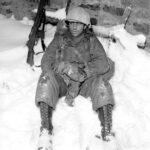
Leonard Russo of HQ Company, 3rd Battalion, 9th Infantry Regiment “Manchu”, 2nd Infantry Division, during the Battle of the Bulge near Bütgenbach Belgium – January 1945
•
He was 18 years old in this picture… Leonard Louis Russo Sr. was born on March 3, 1926 in Manhattan NYC, but evidently his parents were from Norwalk, Connecticut. After WW2 He met his wife Ann Amarylis Neumann from Shiner Texas in Austin and they were married on October 26,…
-
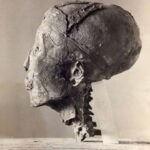
Tutankhamun’s mummy.
•
When King Tutankhamun’s mummy was first examined, it was discovered that the body could not be easily separated from the coffin, as the resins and unguents used in the embalming process had seeped into the wrappings, effectively adhering the body to the coffin. In order to remove the body, it…
-

IF YOU SEE THIS, DON’T PULL IT OUT (and don’t kill it).
•
Although it may be a little late, it may still be of some use. You never know. The eggs hatch at the end of August, beginning of September. It is especially aimed at all those holidaymakers who are always hidden between the rocks during low tide. These are octopus eggs.…
-
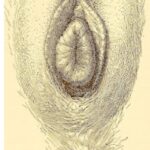
A Mistake That Common People Make
•
A woman enters the consultation room. She can hardly walk, as if something is stuck between her legs. She has a hard time explaining what is wrong, but it is certainly “down there.” The doctors asks her to undress, but she hesitates. In the end, she climbs over the invisible…
-

In honor of Marine Cpl. Michael R. Speer.
•
Marine Cpl. Michael R. SpeerDied April 9, 2004 Serving During Operation Iraqi Freedom 24, of Davenport, Iowa; assigned to 2nd Battalion, 2nd Marines, 2nd Marine Division, II Marine Expeditionary Force, Camp Lejeune, N.C.; killed April 9 by hostile fire in Anbar province, Iraq. KINGSPORT, Tenn. — A Marine from Kingsport…
-

In honor of Marine Sgt. Byron W. Norwood
•
Died November 13, 2004 Serving During Operation Iraqi Freedom 25, of Pflugerville, Texas; assigned to 3rd Battalion, 1st Marine Regiment, 1st Marine Division, I Marine Expeditionary Force, Camp Pendleton, Calif.; killed Nov. 13 by enemy action in Anbar province, Iraq. Fallen Marine’s parents honored during State of the Union speech…
-
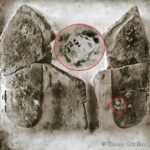
An astonishing revelation emerged from the depths of time: a shoe print fossil, hailing from a staggering 500 million years ago, has left scientists grappling with the implications for human history.
•
Unearthed from the rugged slate terrain of Utah, this enigmatic imprint sent shockwaves through both the local community and the scientific realm. In 1968, William J. Meister, an intrepid trilobite collector, stumbled upon this extraordinary discovery nestled within a slate block rich with fossilized trilobites. What he found was nothing…
-
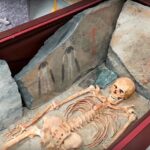
In 1985, archaeologists made a groundbreaking discovery in Karakol village, Russia, when they unearthed a 5,000-year-old burial containing a fascinating artistic feature.
•
The stone slabs used as the walls of the burial site were adorned with a series of polychrome rock paintings, rendered in three distinct colors—white, red, and black. This marked the first known instance of polychrome rock art in Siberia, providing a rare glimpse into the artistic expression and symbolic…
-
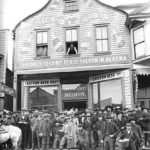
Wyatt Earp, the famous lawman known for his role in the Gunfight at the O.K. Corral, had a quieter chapter in his life when he moved to Nome, Alaska, in the late 1880s.
•
Together with his wife, Josephine, Earp owned the Second Class Saloon from 1887 to 1901. This establishment was one of many businesses in the bustling gold rush town, catering to the miners, prospectors, and adventurers who flooded into the region during the Gold Rush era. Earp’s saloon became a central…
-

This is Caesar, an enslaved man from New York.
•
He was the last slave to be “manumitted” (freed by his master) in the State of New York, when all forms of slavery were outlawed there in 1841. He had outlived at least three or four generations of his “masters”, the Nicholls family, and when they allowed him to retire…